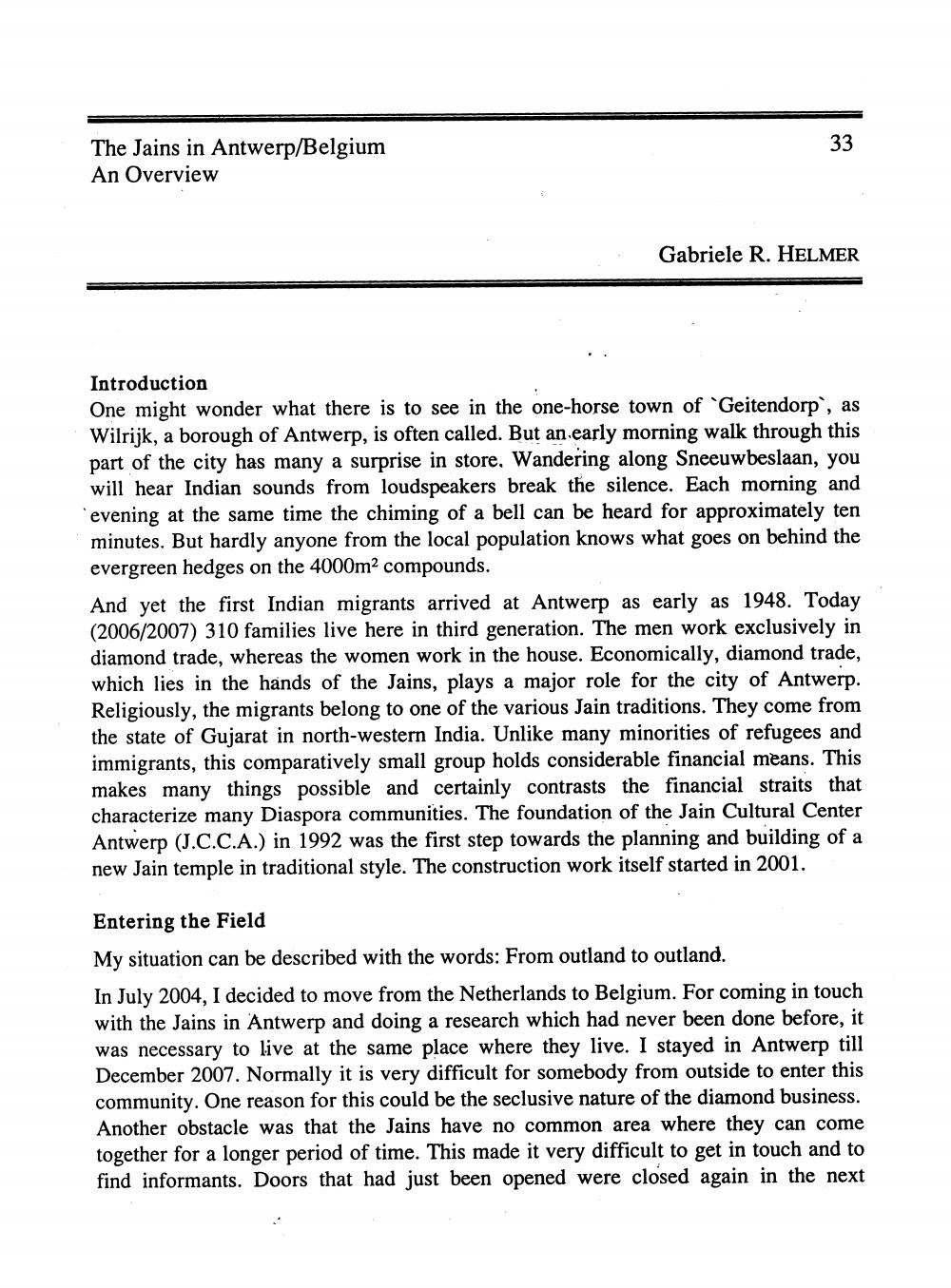________________
The Jains in Antwerp/Belgium
An Overview
33
Gabriele R. HELMER
Introduction
One might wonder what there is to see in the one-horse town of 'Geitendorp', as Wilrijk, a borough of Antwerp, is often called. But an early morning walk through this part of the city has many a surprise in store. Wandering along Sneeuwbeslaan, you will hear Indian sounds from loudspeakers break the silence. Each morning and evening at the same time the chiming of a bell can be heard for approximately ten minutes. But hardly anyone from the local population knows what goes on behind the evergreen hedges on the 4000m2 compounds.
And yet the first Indian migrants arrived at Antwerp as early as 1948. Today (2006/2007) 310 families live here in third generation. The men work exclusively in diamond trade, whereas the women work in the house. Economically, diamond trade, which lies in the hands of the Jains, plays a major role for the city of Antwerp. Religiously, the migrants belong to one of the various Jain traditions. They come from the state of Gujarat in north-western India. Unlike many minorities of refugees and immigrants, this comparatively small group holds considerable financial means. This makes many things possible and certainly contrasts the financial straits that characterize many Diaspora communities. The foundation of the Jain Cultural Center Antwerp (J.C.C.A.) in 1992 was the first step towards the planning and building of a new Jain temple in traditional style. The construction work itself started in 2001.
Entering the Field
My situation can be described with the words: From outland to outland.
In July 2004, I decided to move from the Netherlands to Belgium. For coming in touch with the Jains in Antwerp and doing a research which had never been done before, it was necessary to live at the same place where they live. I stayed in Antwerp till December 2007. Normally it is very difficult for somebody from outside to enter this community. One reason for this could be the seclusive nature of the diamond business. Another obstacle was that the Jains have no common area where they can come together for a longer period of time. This made it very difficult to get in touch and to find informants. Doors that had just been opened were closed again in the next




